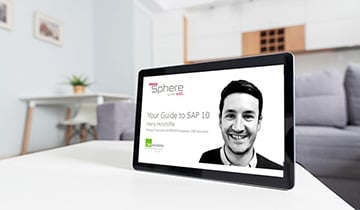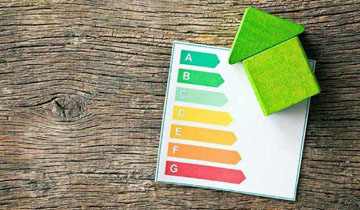5 min read
How SAP 10 will impact the heating industry
SAP 10 and its iterations has heavily featured in heating industry news since early 2018 and there is good reason for that. The latest iteration of...

Harry Hinchliffe, Energy Consultant and BREEAM Assessor with our friends at C80 Solutions, guides you through SAP 10 and the impact it will have on how projects are approached from a heating perspective. This includes the removal of Psi values for Accredited Construction details (ACDs).
You can watch the video or read the transcription further down.
What is SAP and why is it important?
SAP is the calculation methodology used to determine a buildings compliance with Part L of building regulations. It calculates a building emission rating, which is the kg of CO2 emissions per square metre over a year. That is then compared with a notional building of the same size and same specification, determining whether it meets the minimum standards or not.
What is SAP 10 and what are the implications?
SAP 10 is the most current iteration of the SAP calculation methodology that is going to be introduced with the new building regulations, which are hopefully coming out in October 2021 (now released in June 2022). It better appreciates the UK energy mix, with over 50% coming from renewable sources such as solar and wind. As well as the reduction and use of fossil fuels to produce power for the electricity grid in the UK.
What is the difference between SAP 10 and SAP 2012?
There are many procedural and methological changes in SAP 10 compared to SAP 2012. Most of these cannot be seen from a developer and architect stand point, most can only see our point as the assessor. There are changes in terms of the actual calculation methodology and the factors that are used to determine the carbon emissions from certain heating fuels. With the change in carbon factor for electricity, it gives a lot more flexibility in terms of the way homes are heated and the energy strategy used by architects and developers. It will help design, I believe, going forward as it helps with the one thing that designers love, which is space. A lot of homes are not going to need radiators on the wall, it can all be powered by underfloor heating, electric radiators, infrared heating systems, which use a lot less space.
What is another big change?
The fact that ACDs can no longer be used in SAP calculations. An ACD is a thermal bridge and looks at a certain Psi Value, which is the amount of heat transferred from a lineal point within a building. Omission of these from the SAP calculation means we are going to see more bespoke junctions detailed through Psi Value calculations and other modelling software. This is going to be a massive step forward in terms of thermal bridge and design of homes and it is going to lead to better quality homes going forward, in terms of thermal insulation and air tightness. It is going to be a massive change, but it will be needed to ensure compliance with Part L Building Regulations.
What will be the main challenges when SAP 10 is introduced?
The main challenges you could face when SAP 10 is introduced, is purely a change of business as usual. There are going to be a number of procedural changes that are going to be happening on construction sites and buildings throughout the country, when looking at domestic projects. With the Psi Value calculations being needed and new details designed, more external consultancy will be required. It is important to engage as compliance with Part L will be very difficult without consultancy. Also, in terms of the air tightness testing, sample testing will no longer be allowed as part of Part L sign-off. Every home and every unit, whether it is on a building site with 300 houses or a block of apartments, every unit will have to be tested to ensure build quality and air tightness, as well as sound tightness.
How to prepare for SAP 10?
The best way to prepare for SAP 10 is to integrate yourself with the information being released by the government and other bodies in terms of updates to calculation methodology and what it means to you. Together ThermoSphere and C80 Solutions have launched talkSAP10 an initiative which looks to create discussion and provide information around SAP 10 and how it could affect the industry going forward.
It is important to keep updated with this to know how designs could be affected going forward and how the construction process could change. More information on talkSAP10 can be found on the ThermoSphere and C80 Solutions websites, along with all of our social media channels.
We have a LinkedIn group, which you are more than welcome to join and engage in discussion with other people within the industry and ourselves.
To find out more about SAP 10 and electric heating simply contact one of the ThermoSphere Team.

5 min read
SAP 10 and its iterations has heavily featured in heating industry news since early 2018 and there is good reason for that. The latest iteration of...

5 min read
The subject of domestic heating continues to be a popular subject. From the inevitable increase in fuel bills to the contribution of home heating on...

5 min read
Over the next two years the government will be gearing up to overhaul the current Standard Assessment Procedure (SAP) system for assessing the energy...